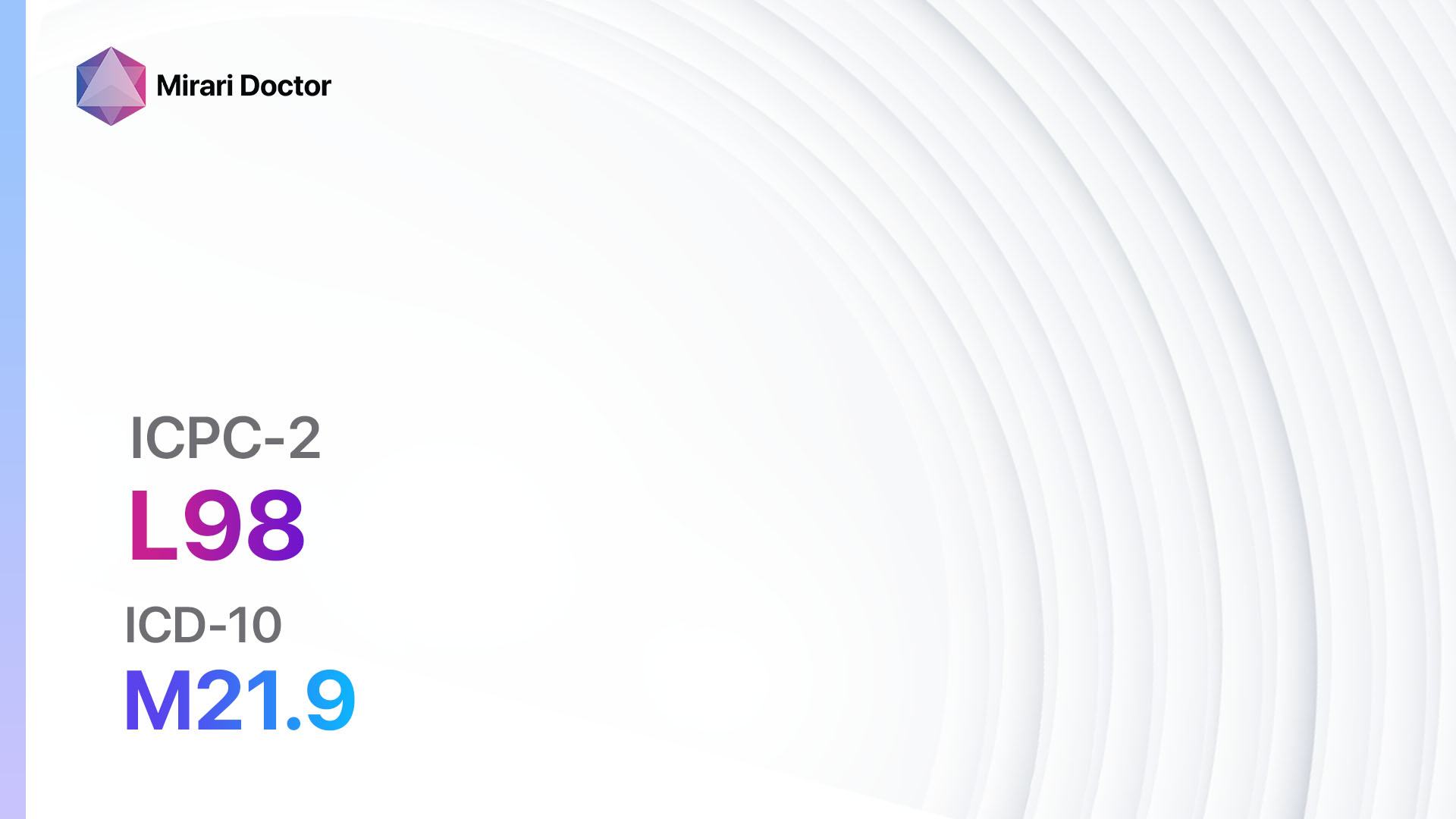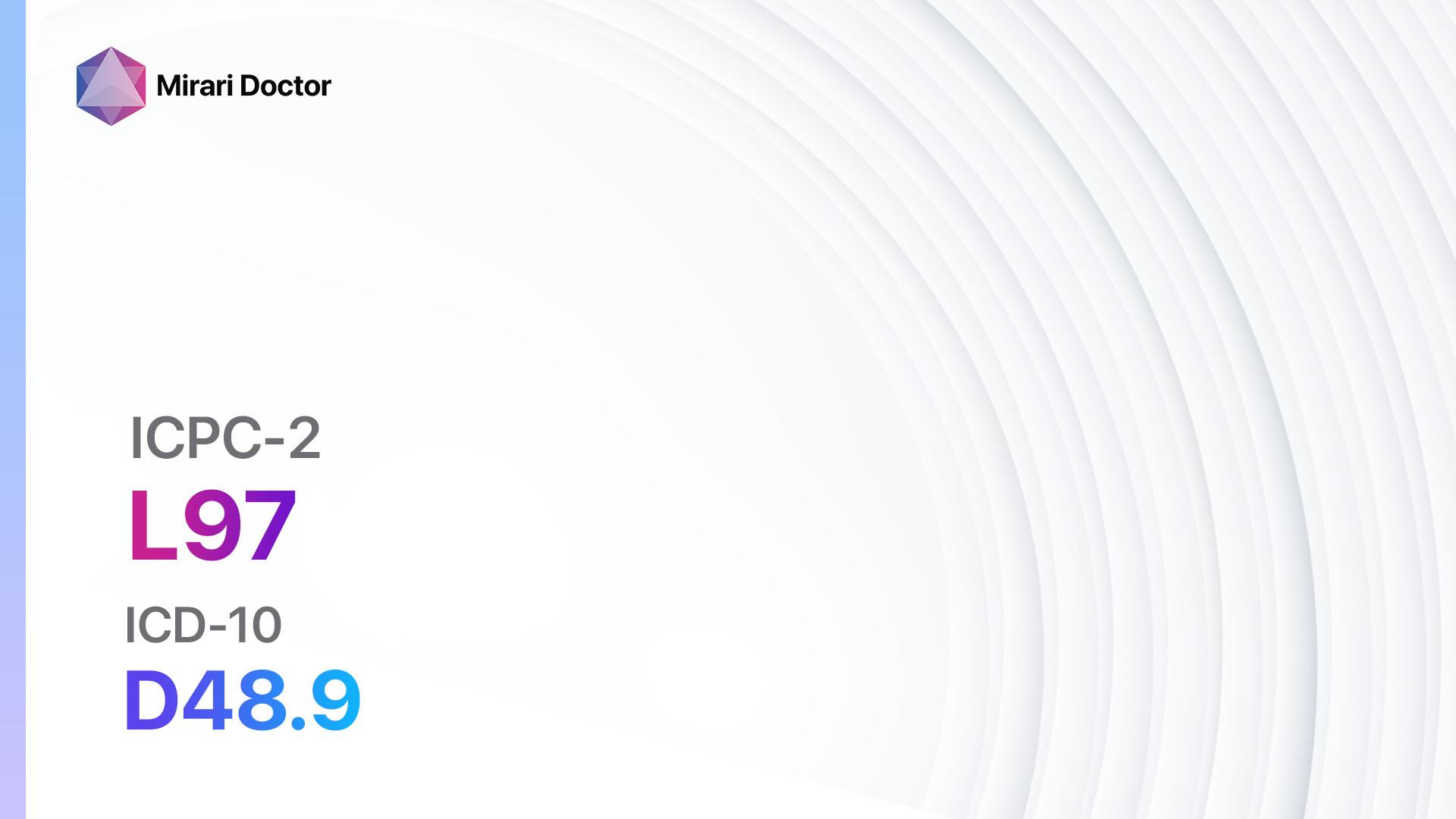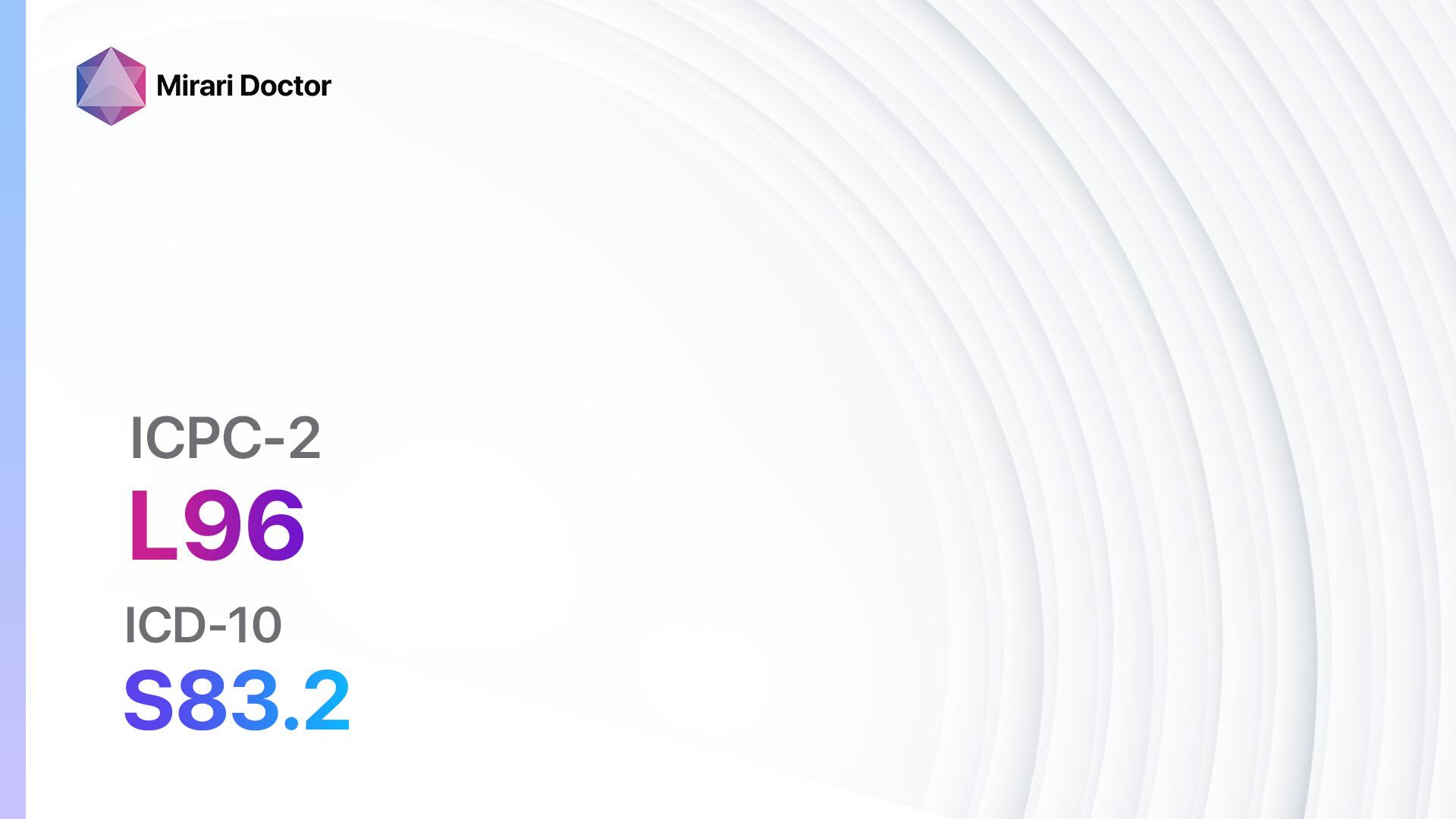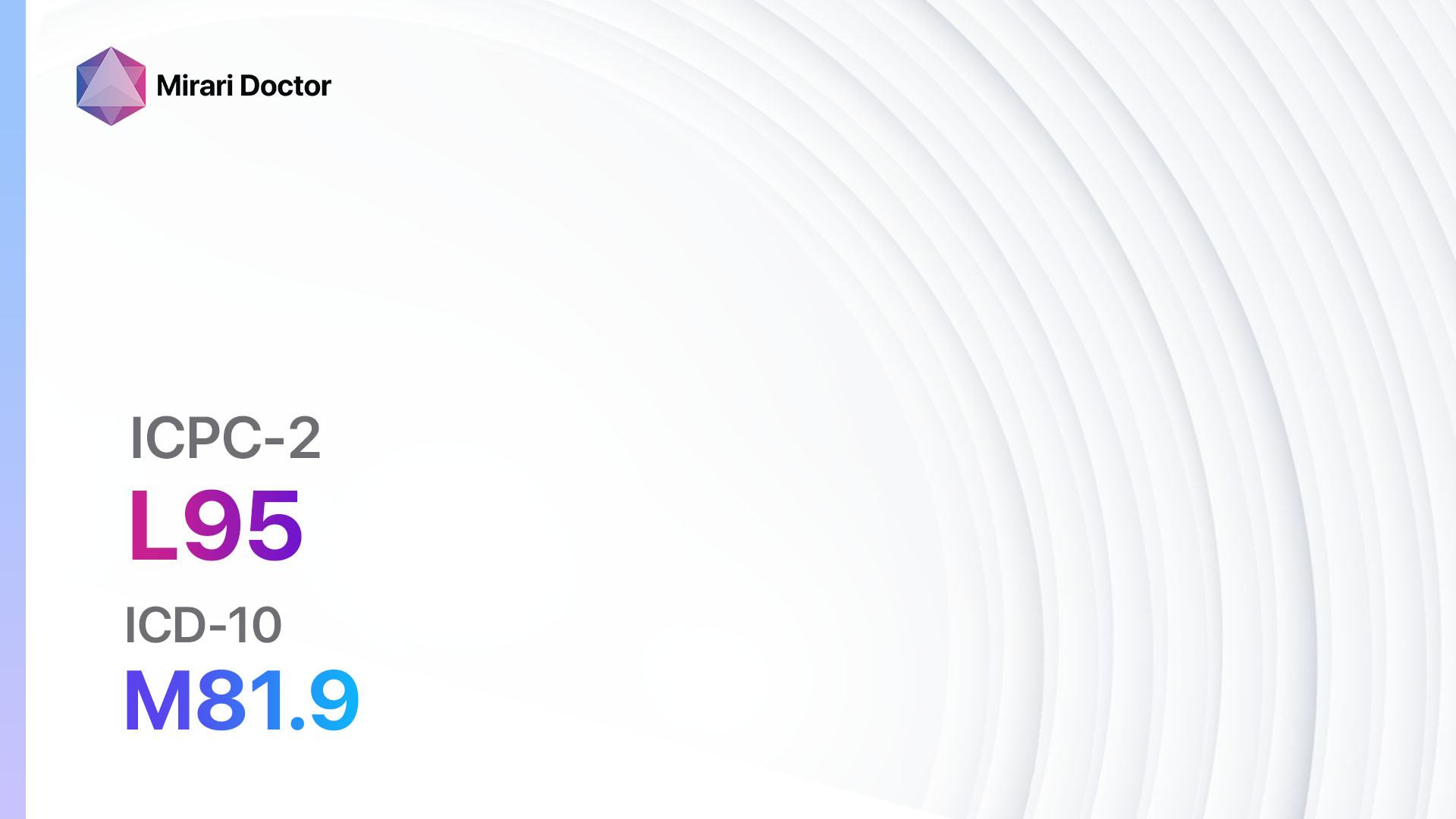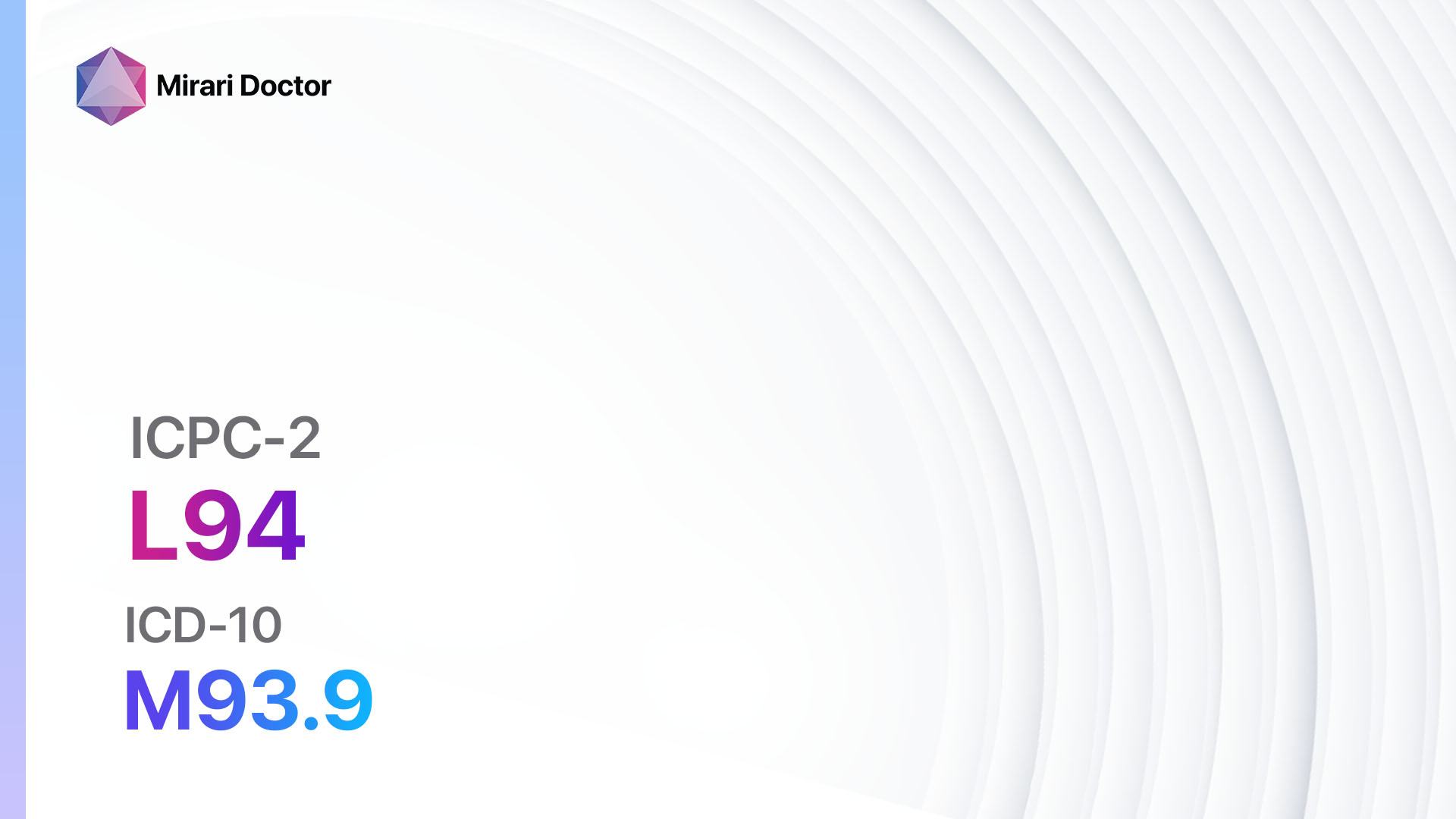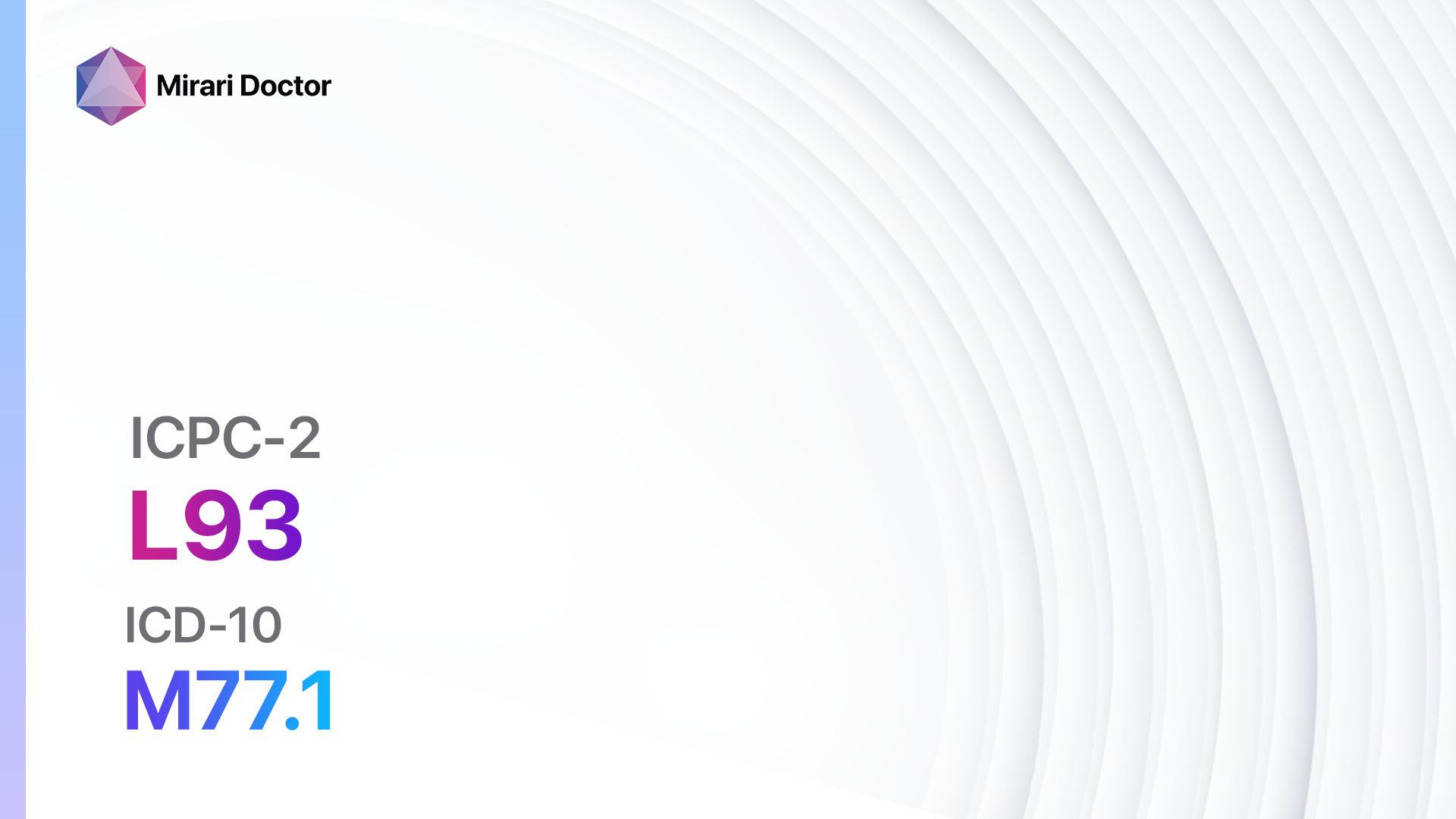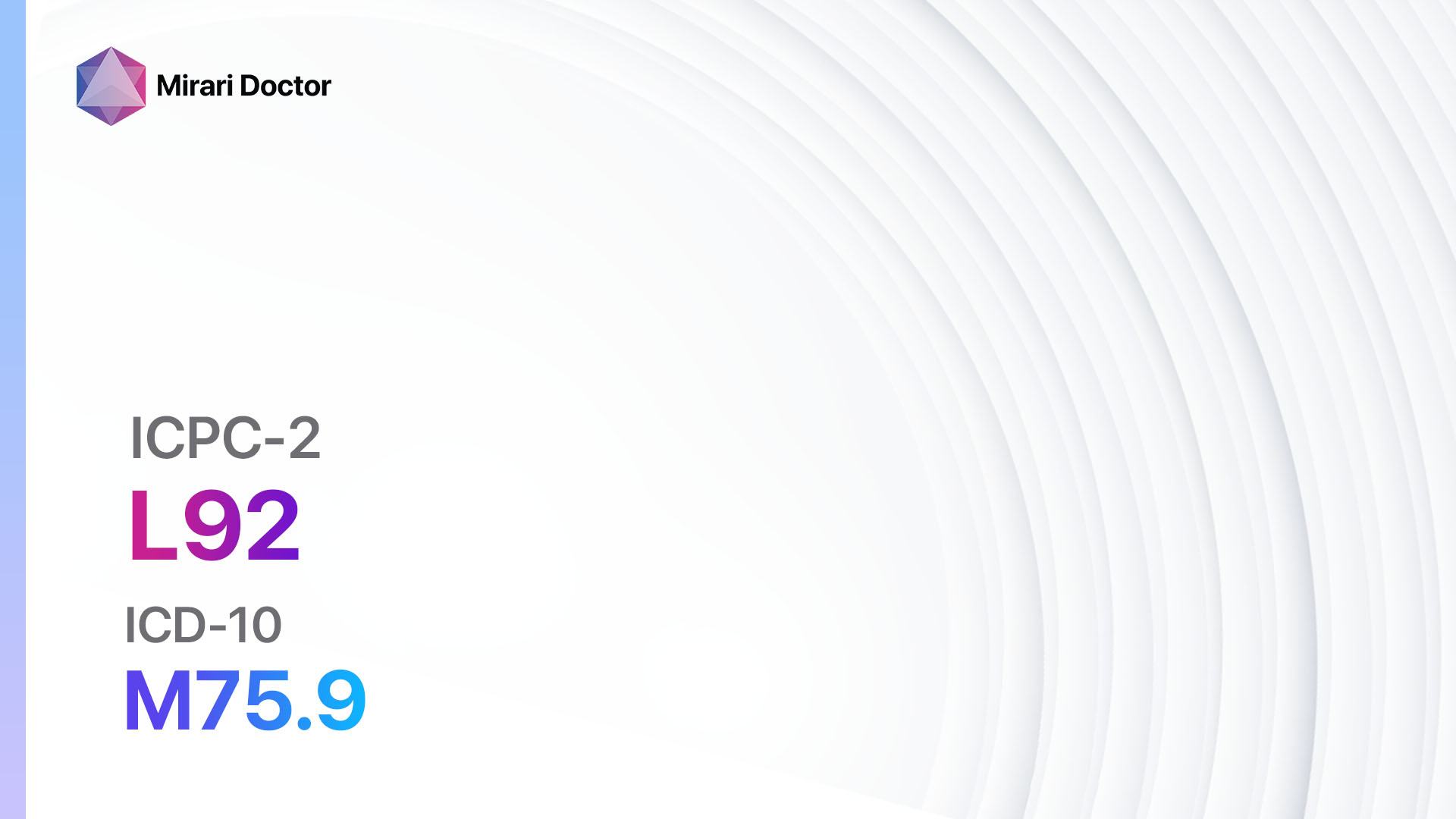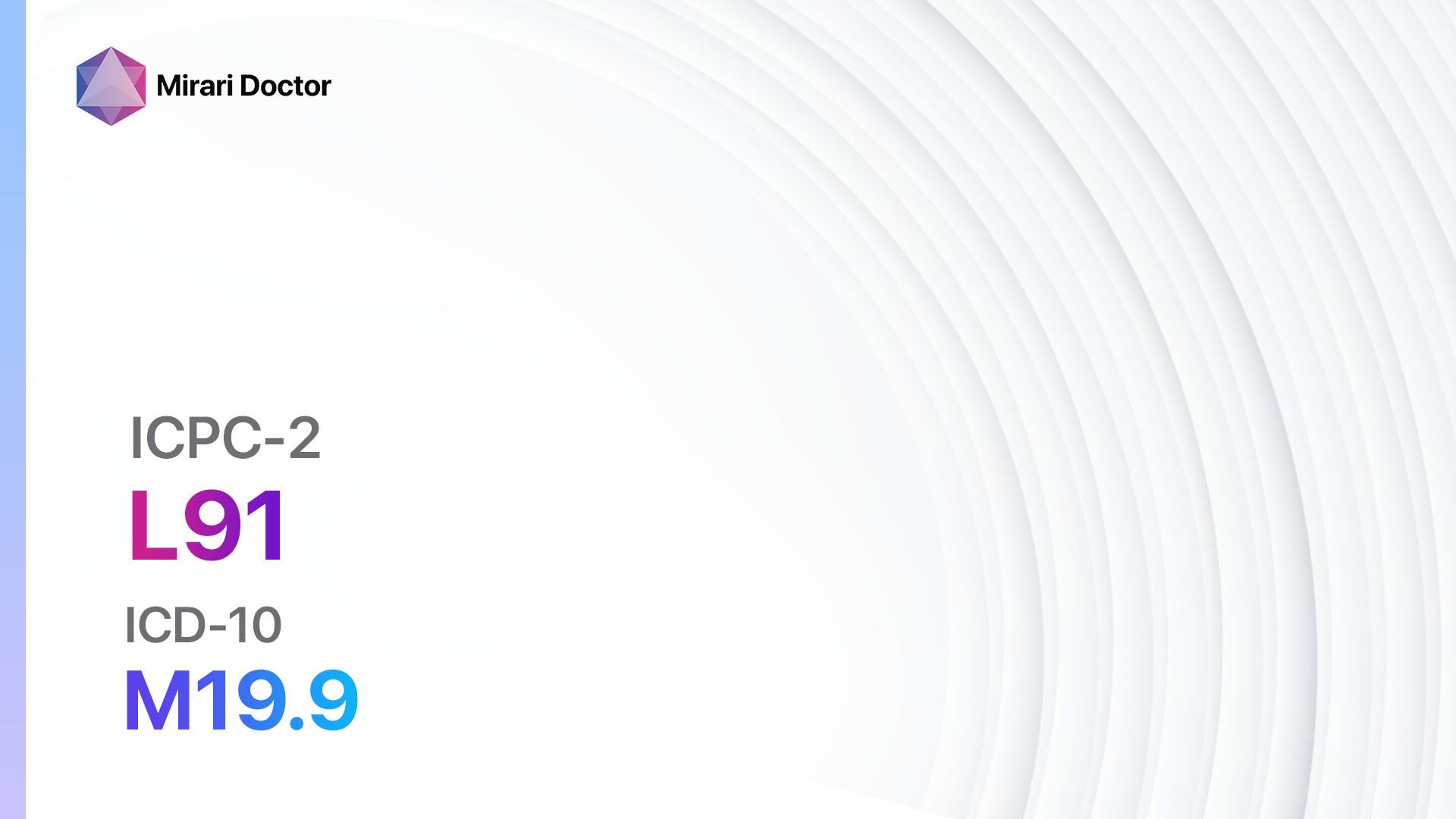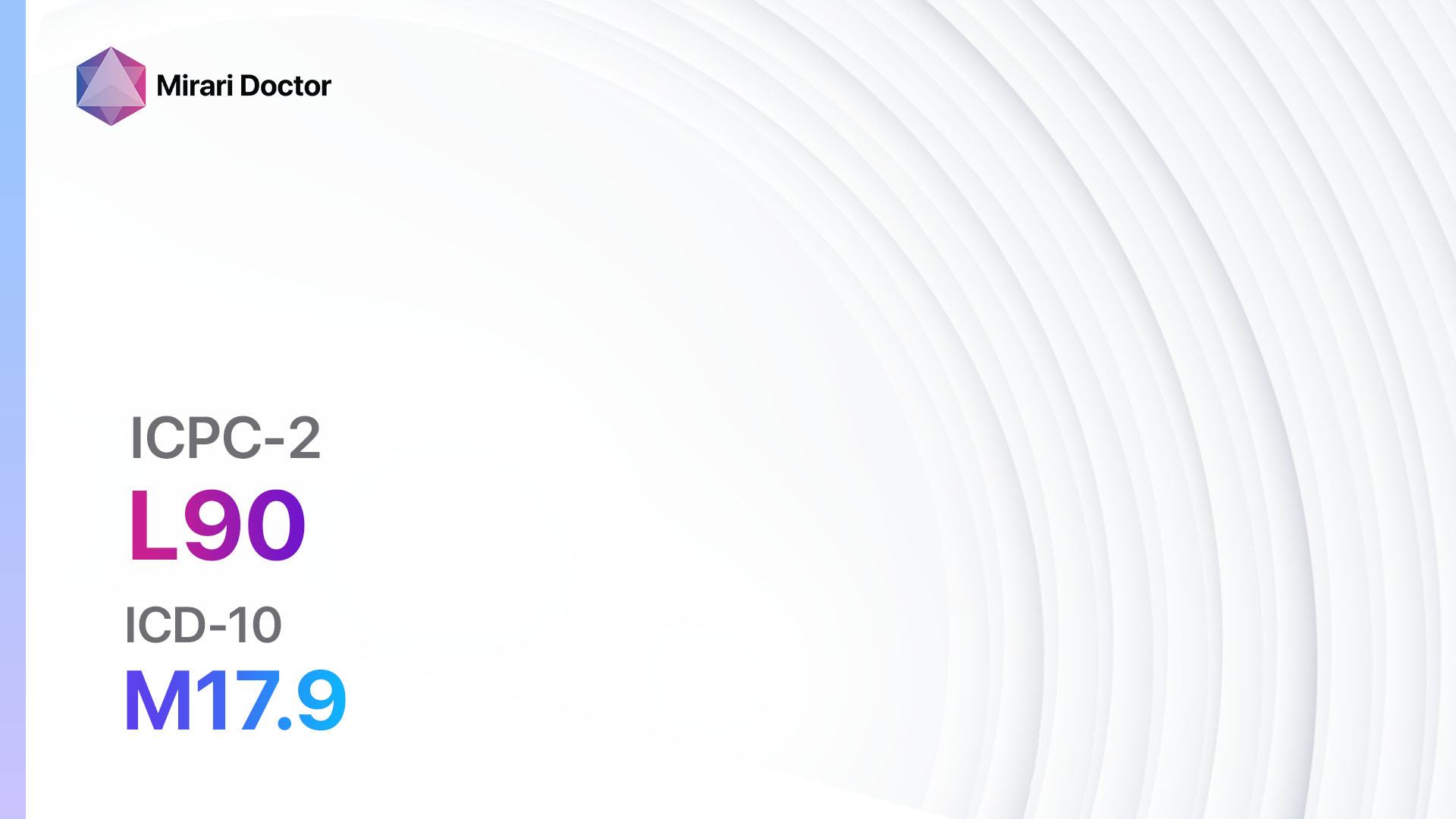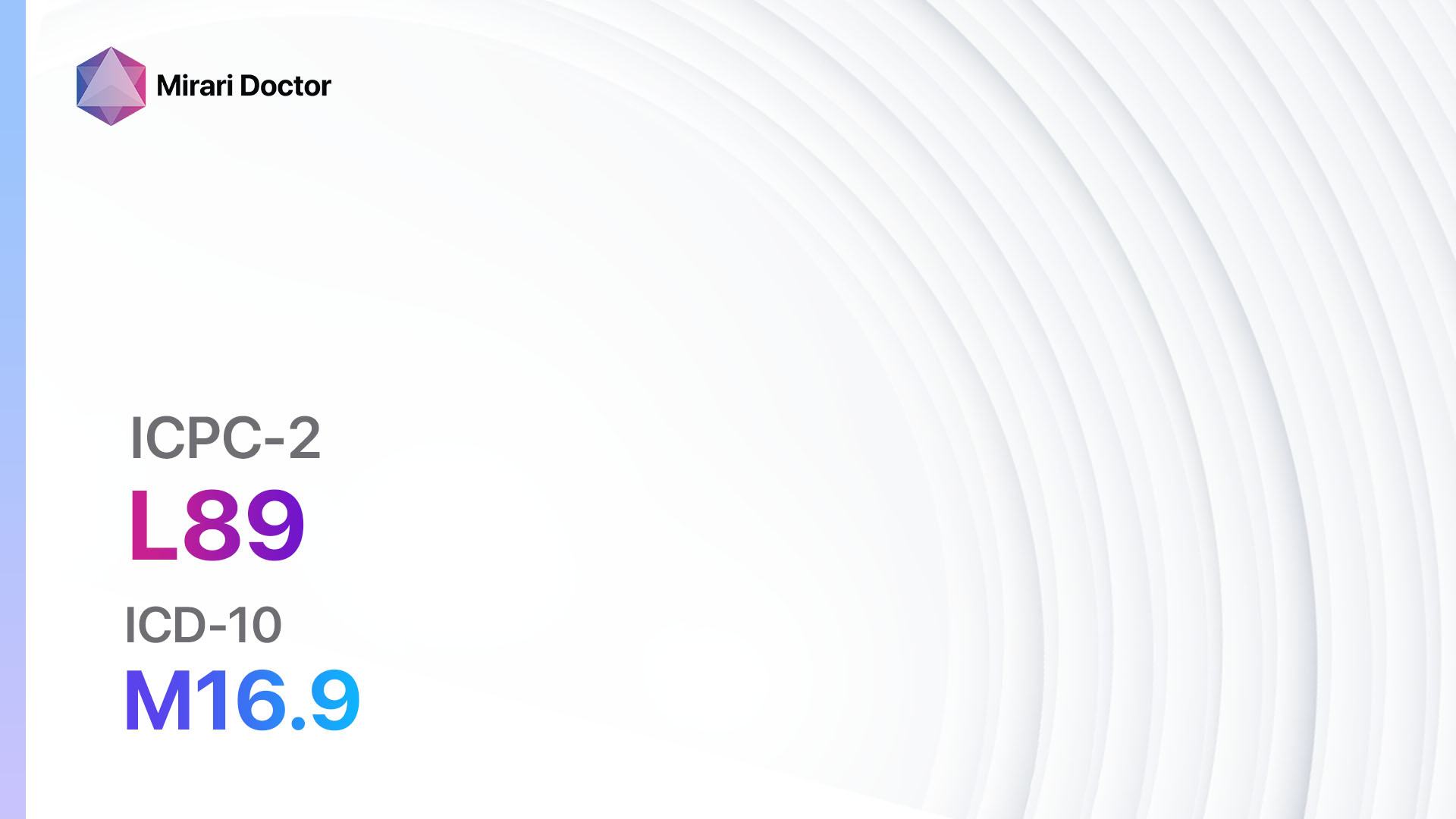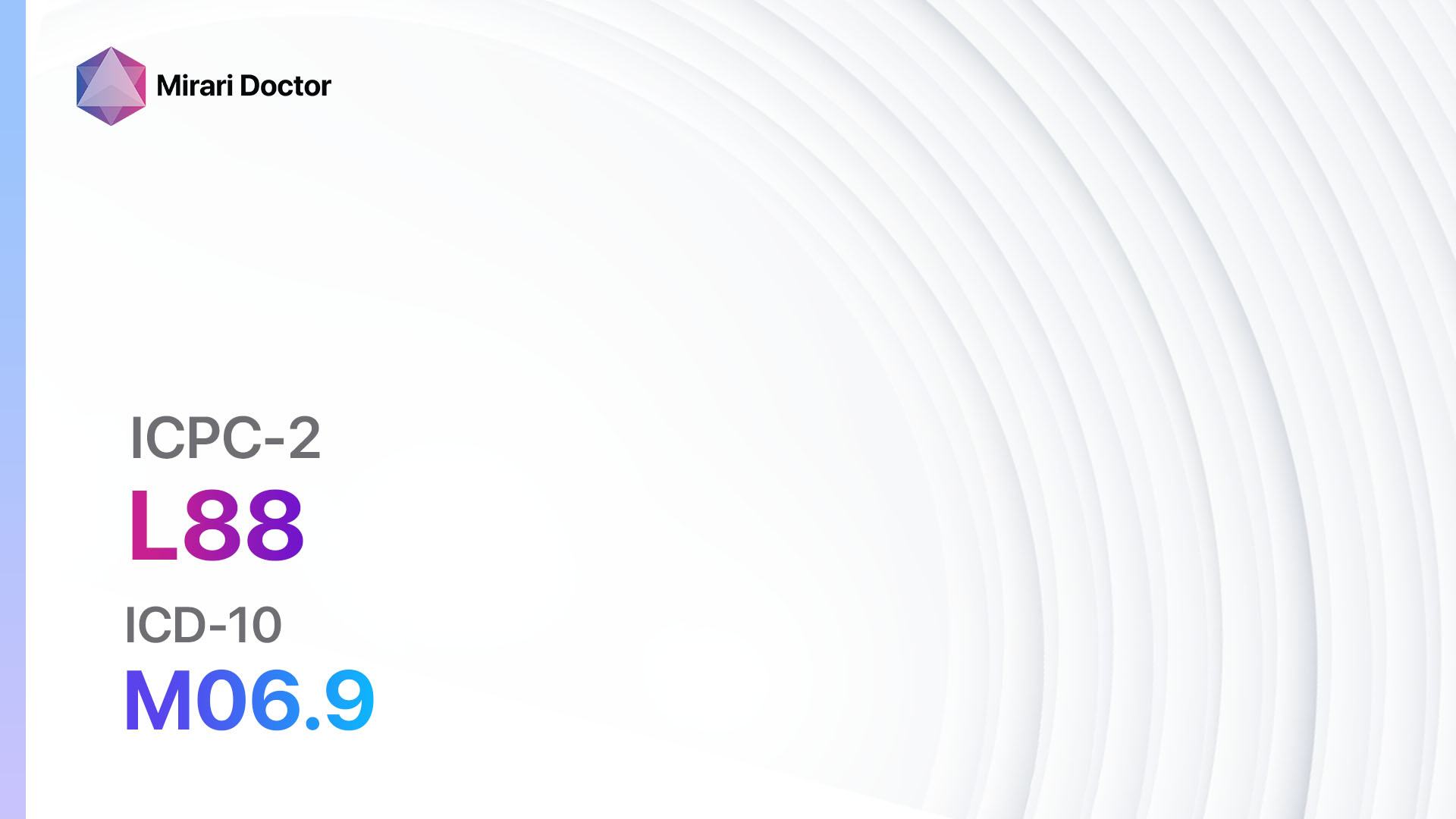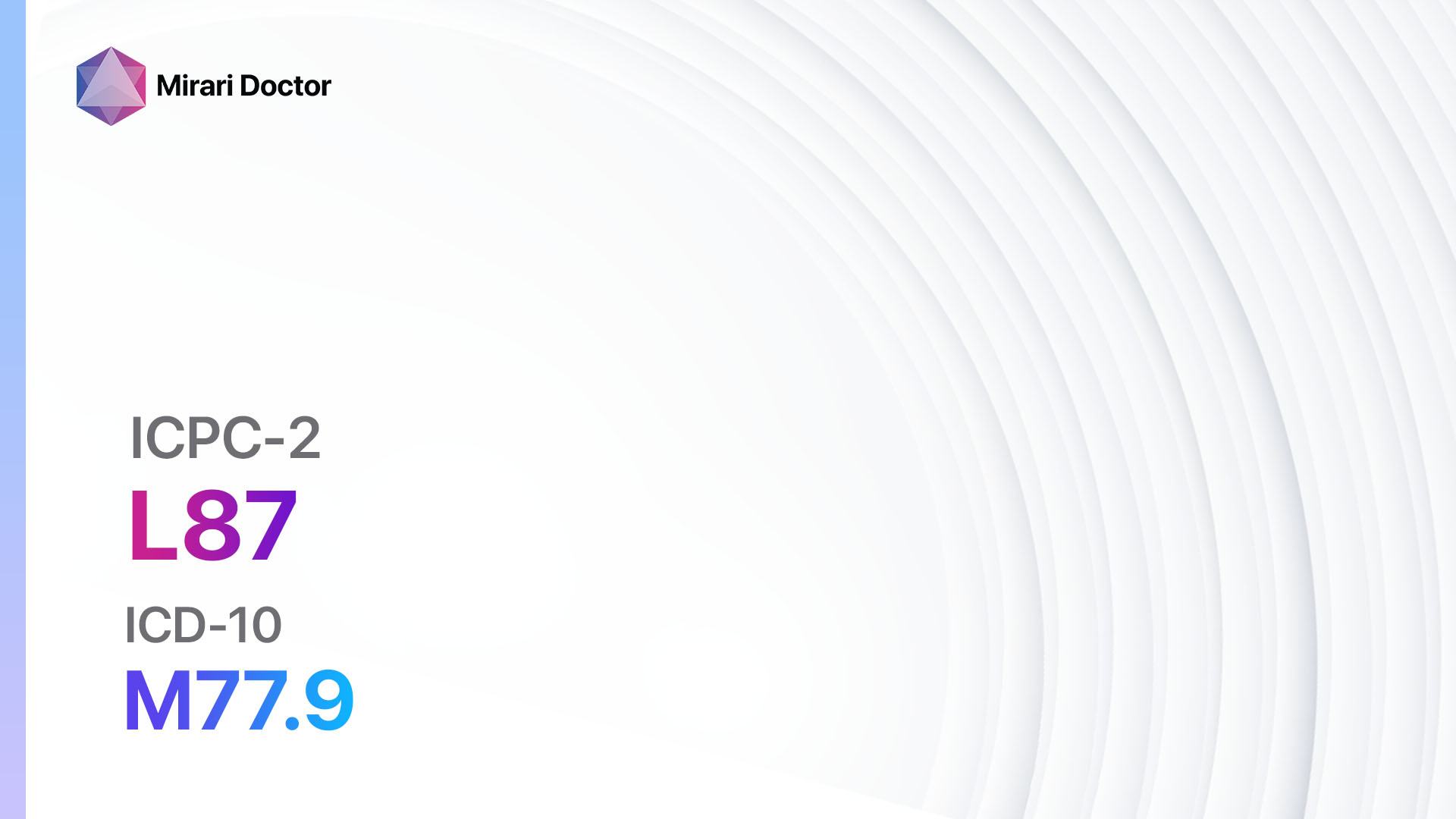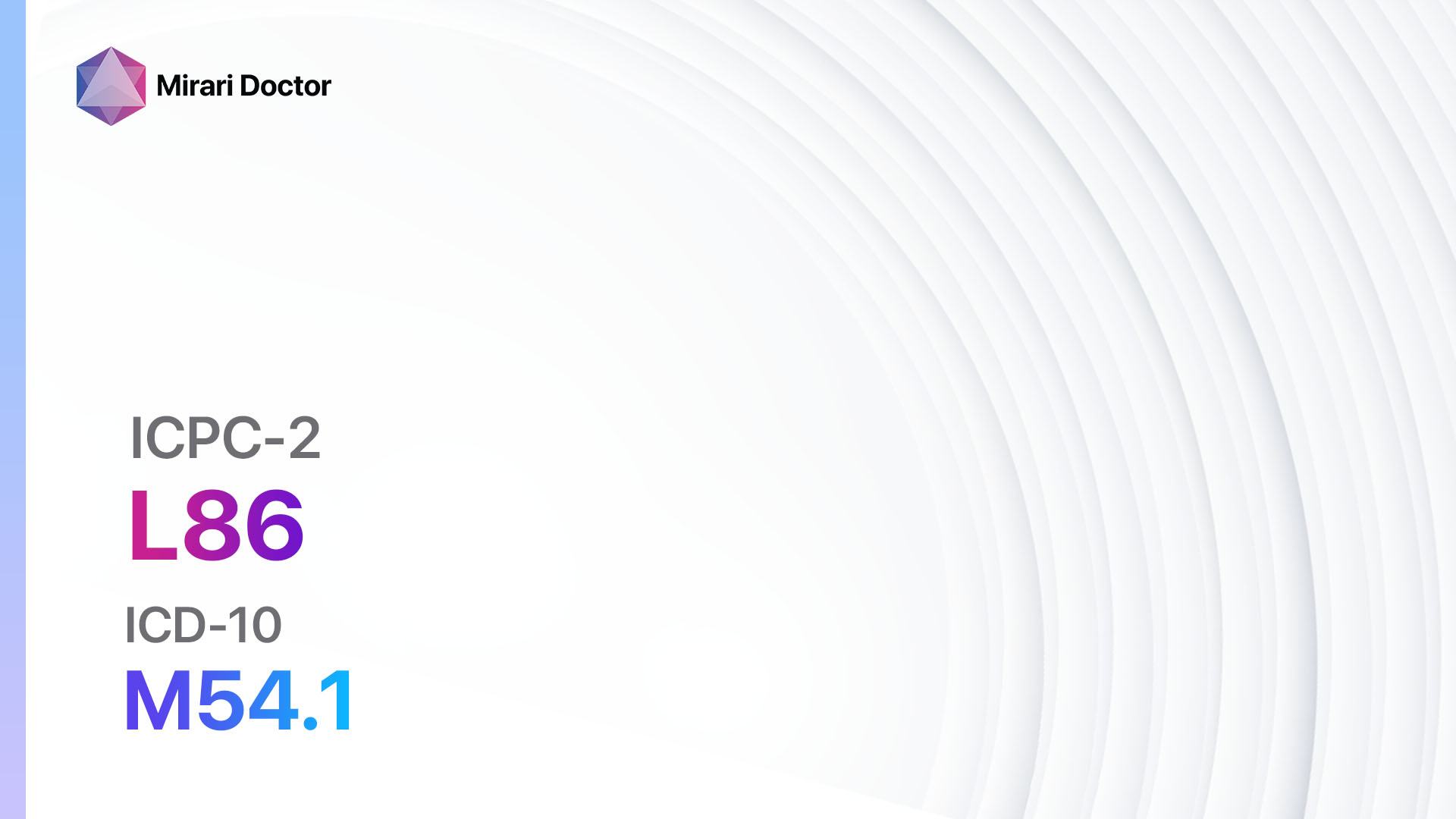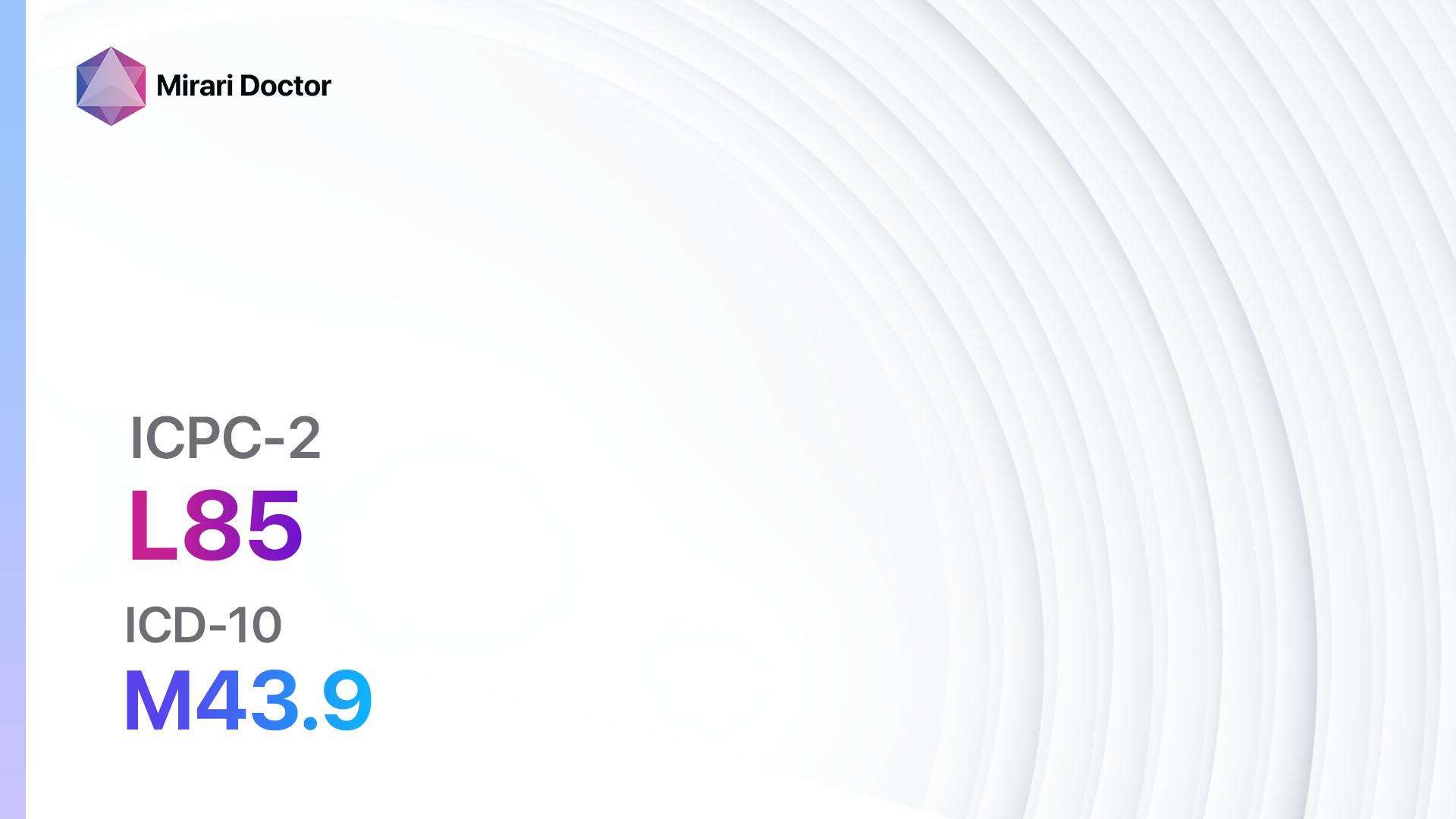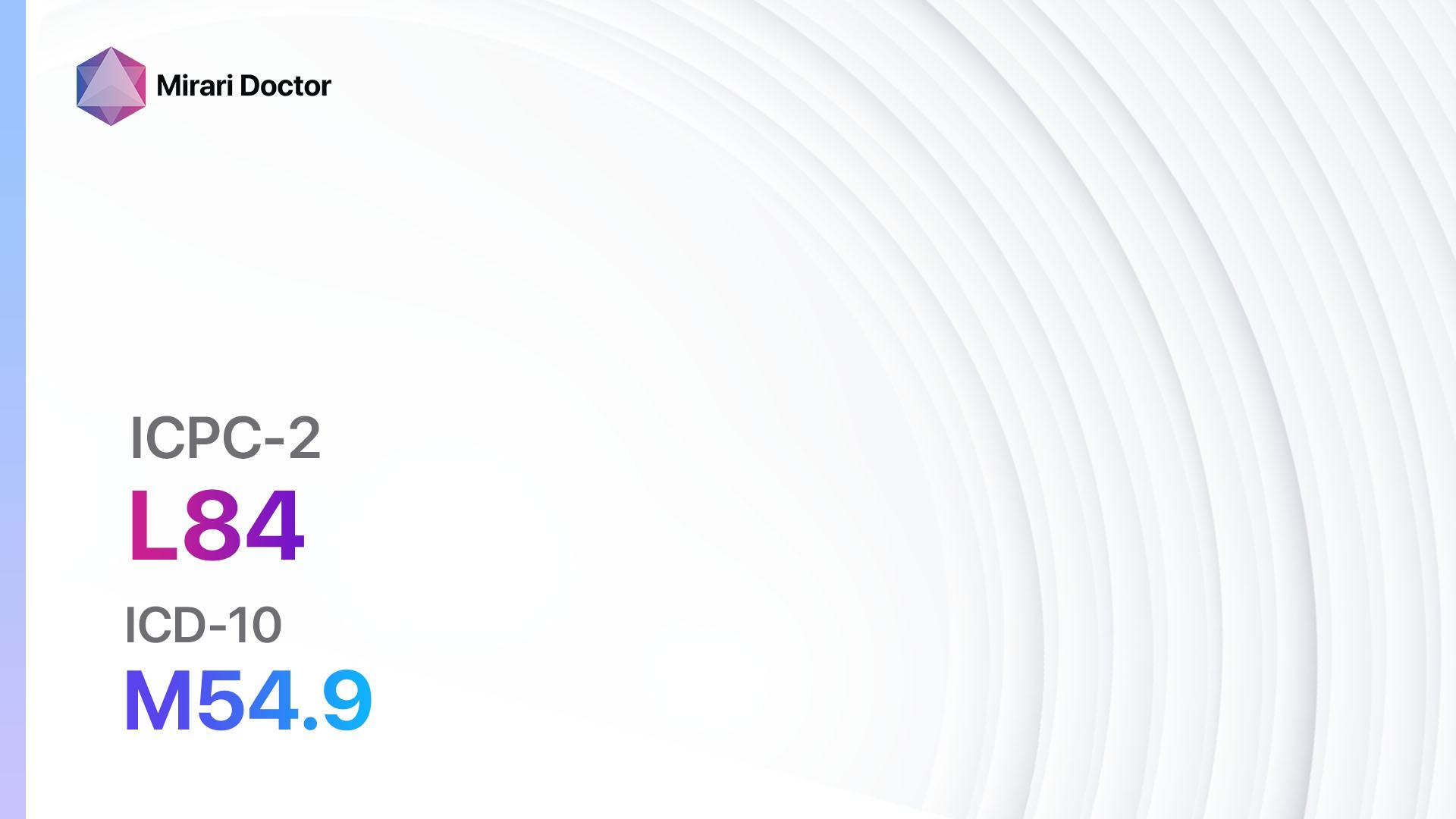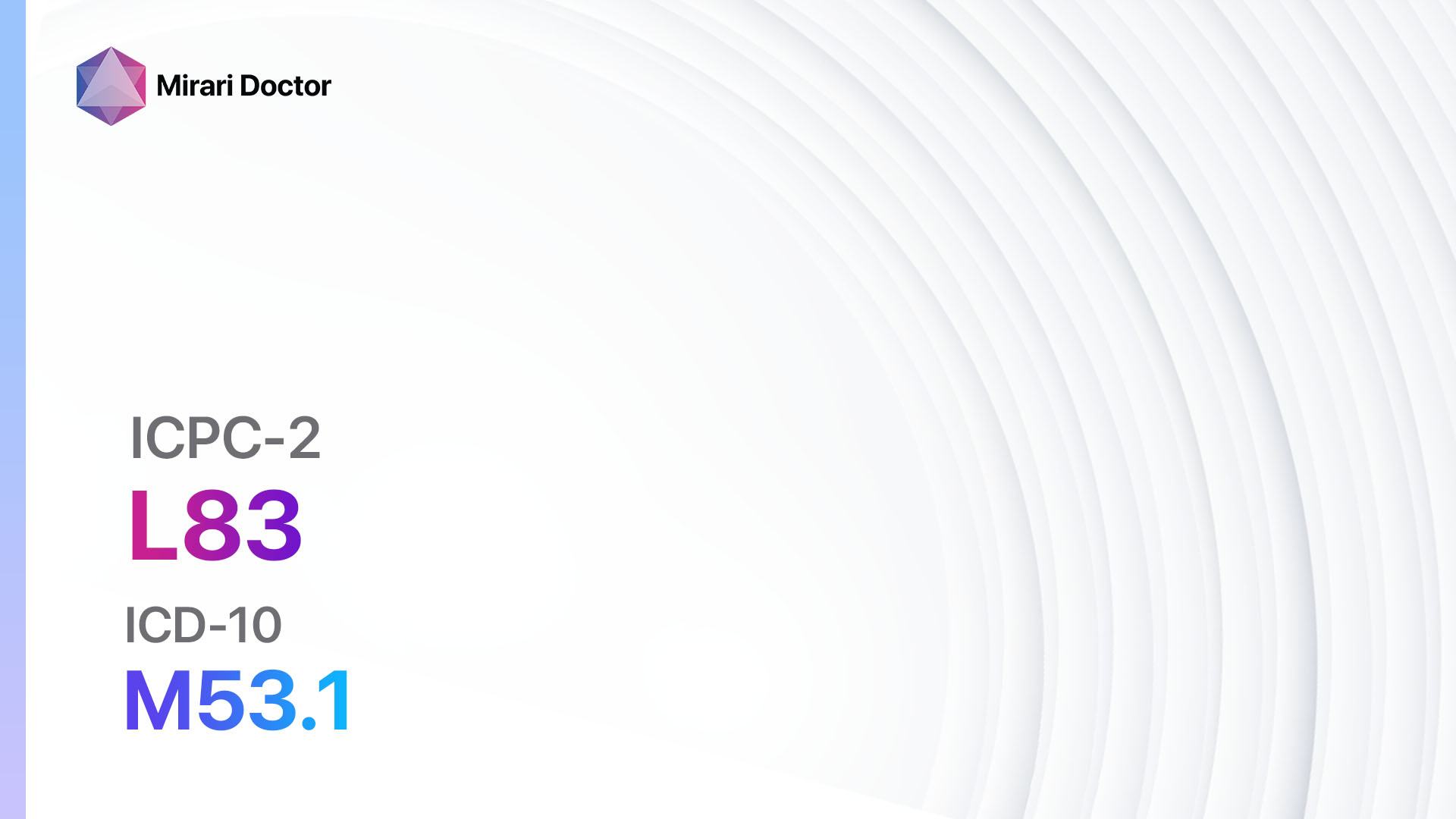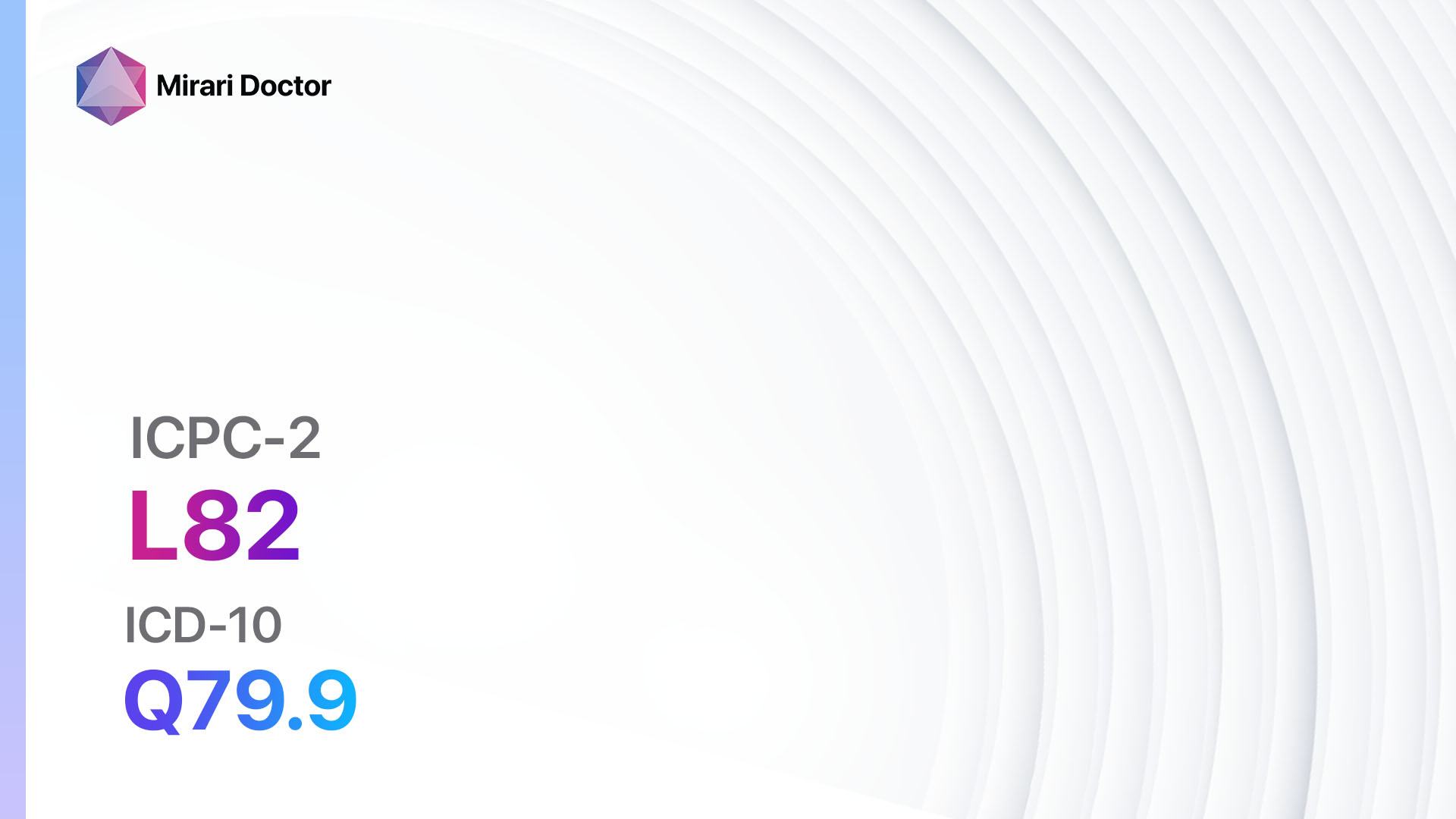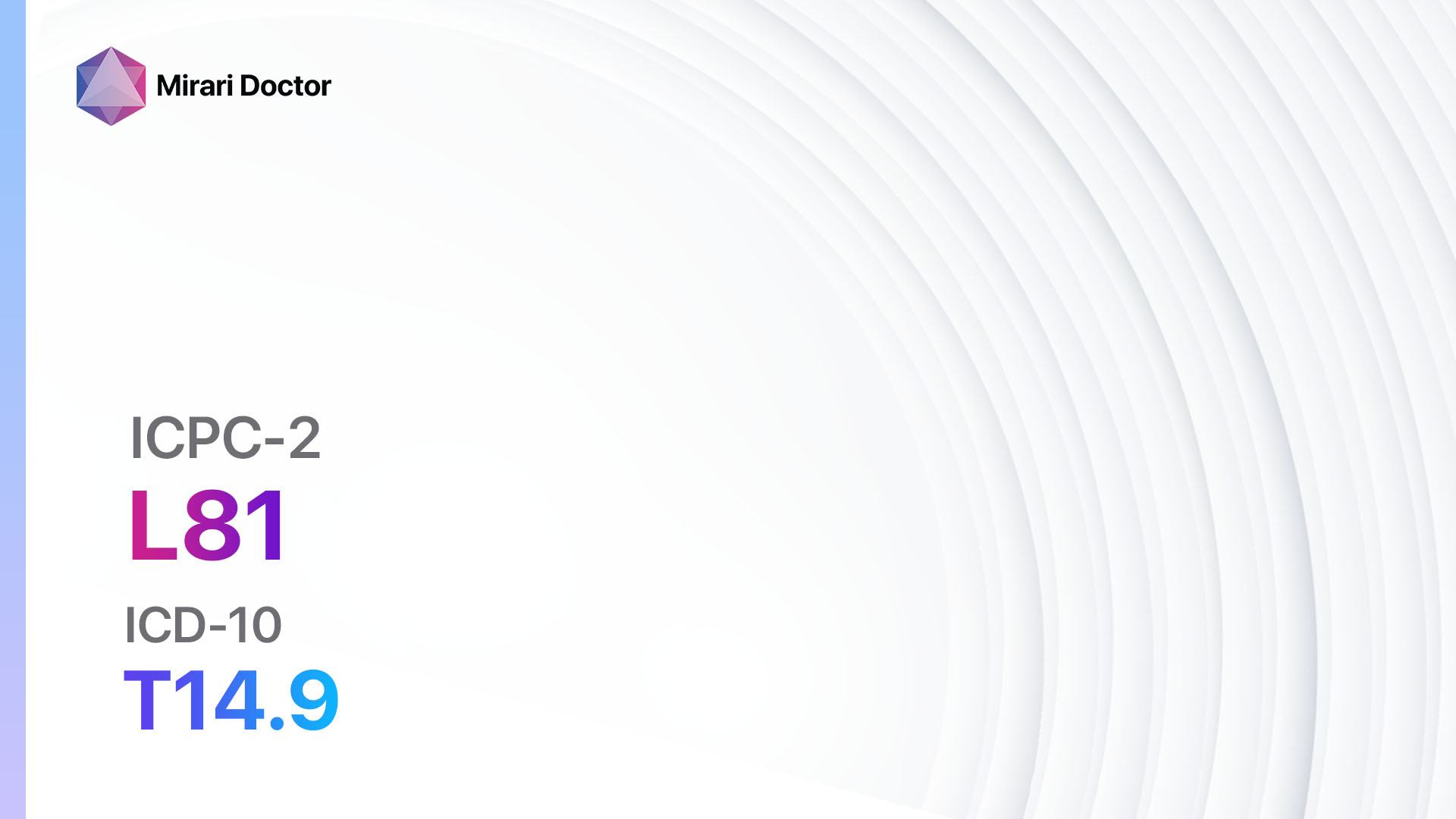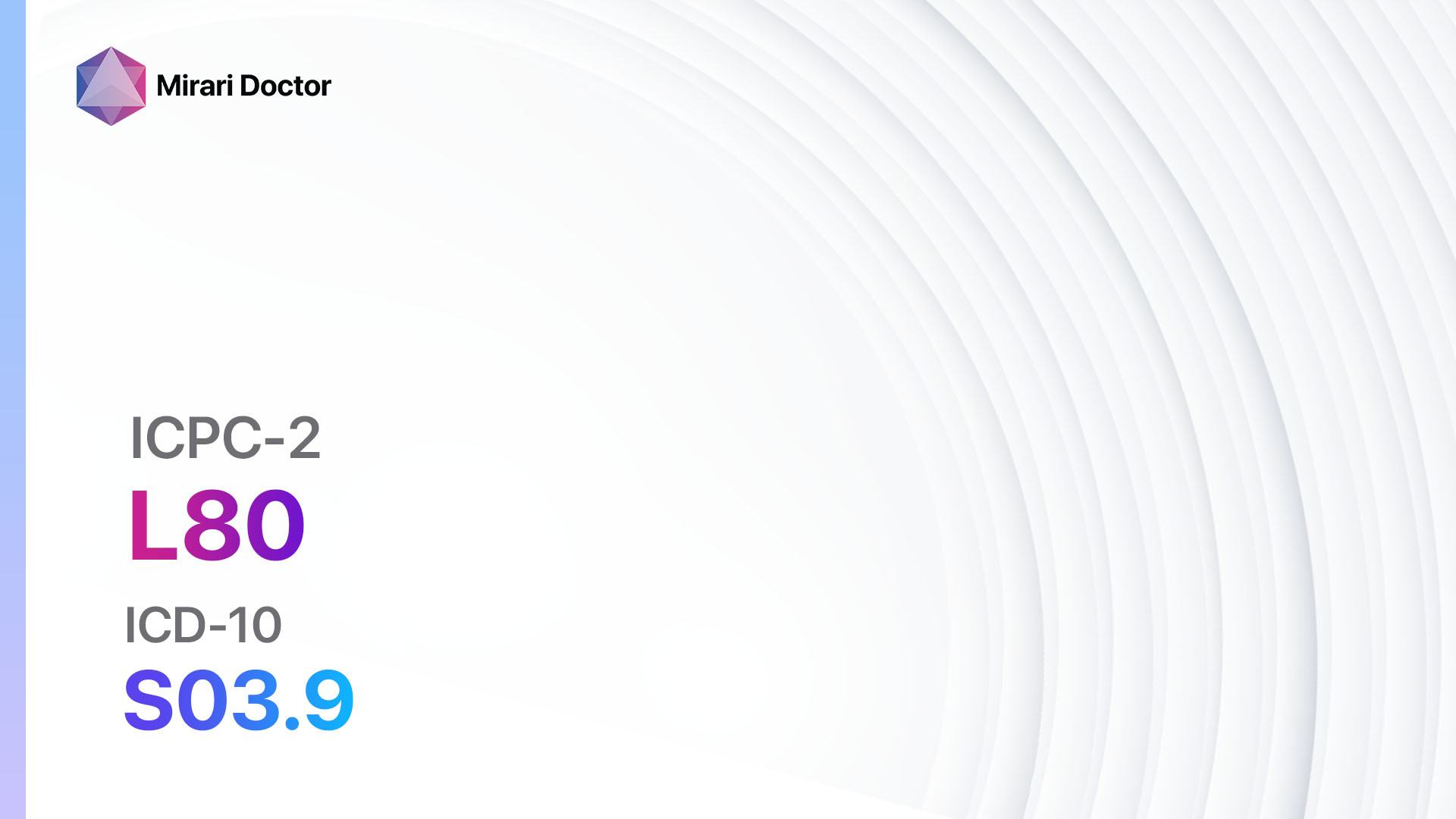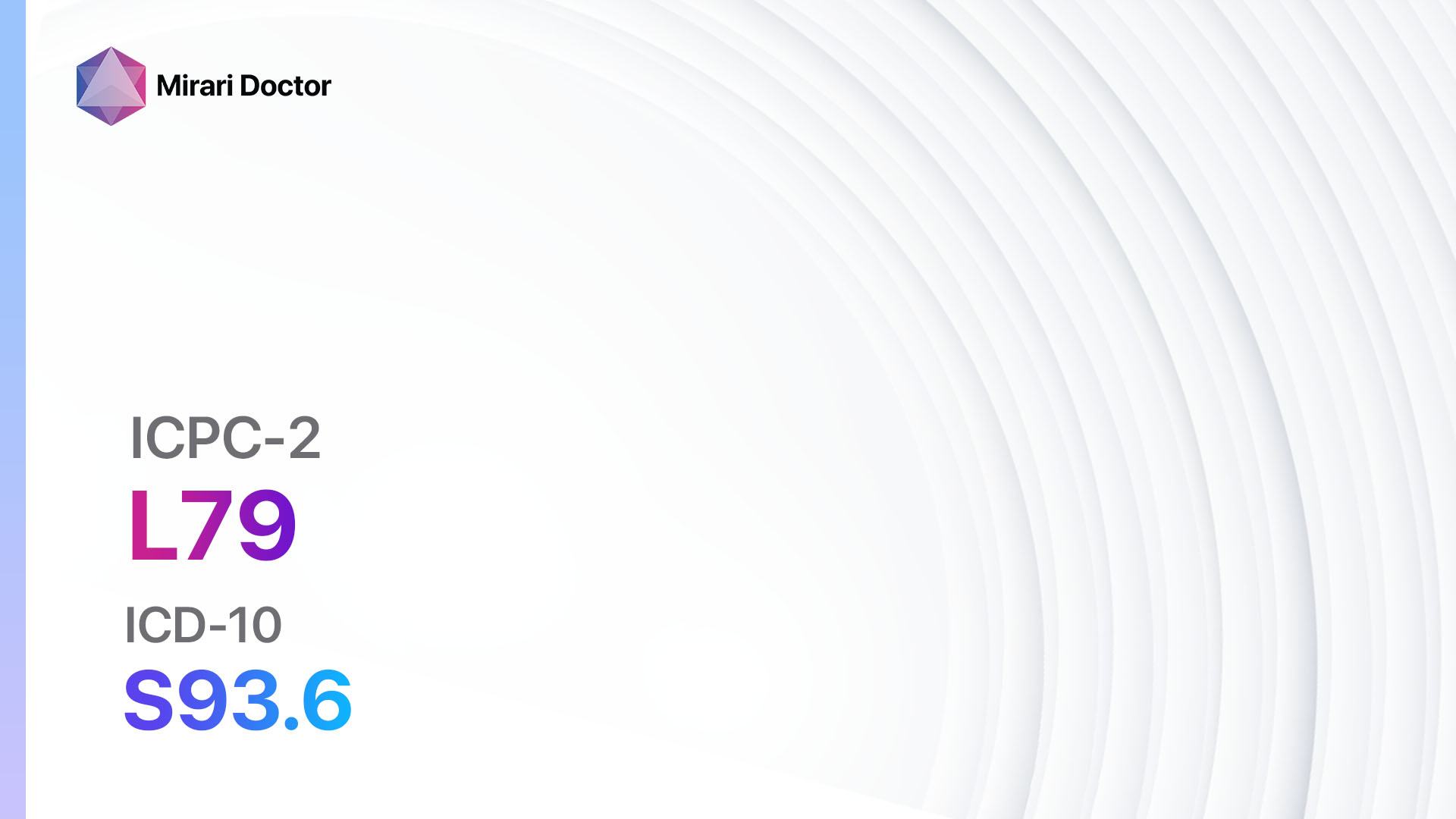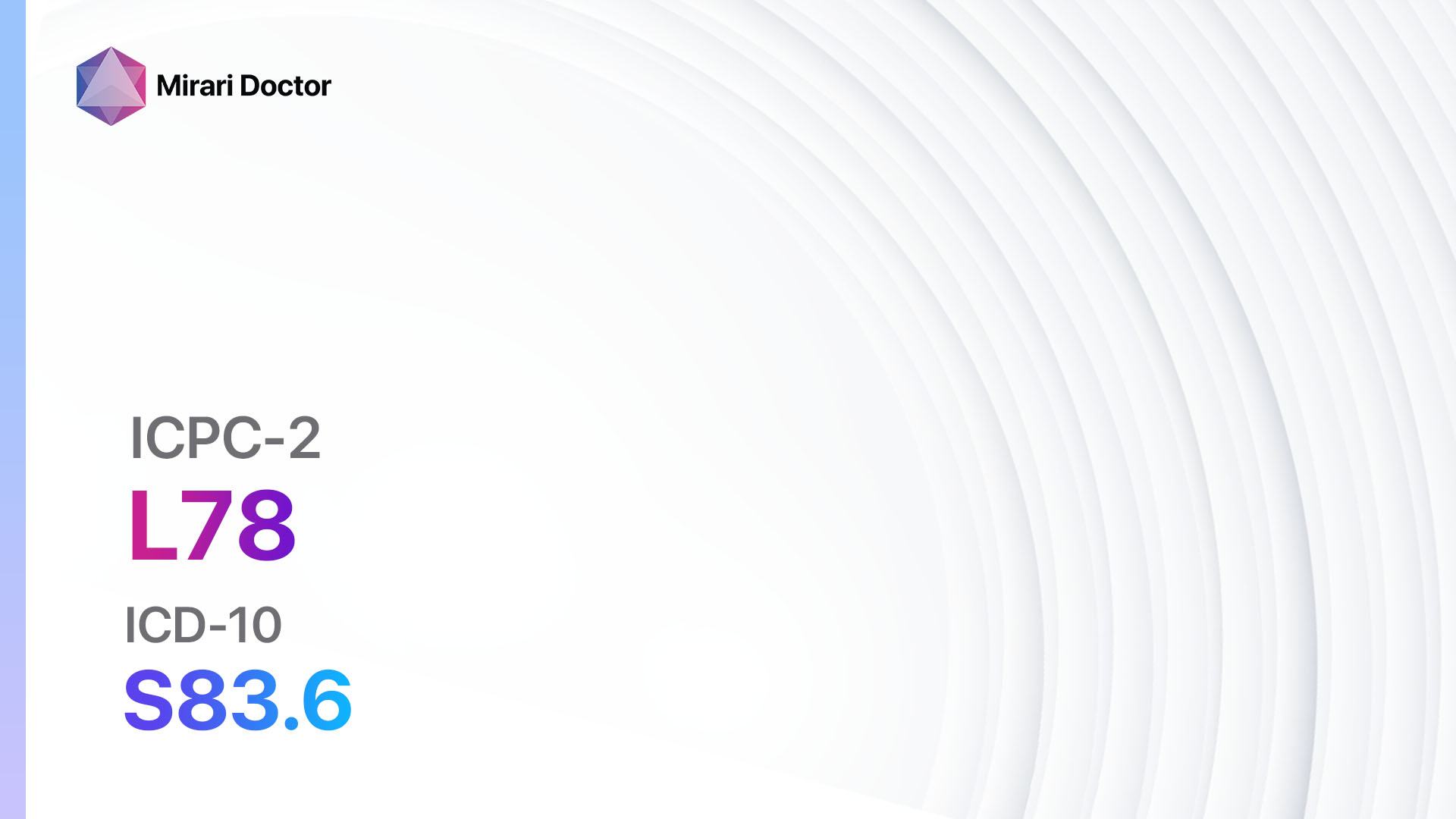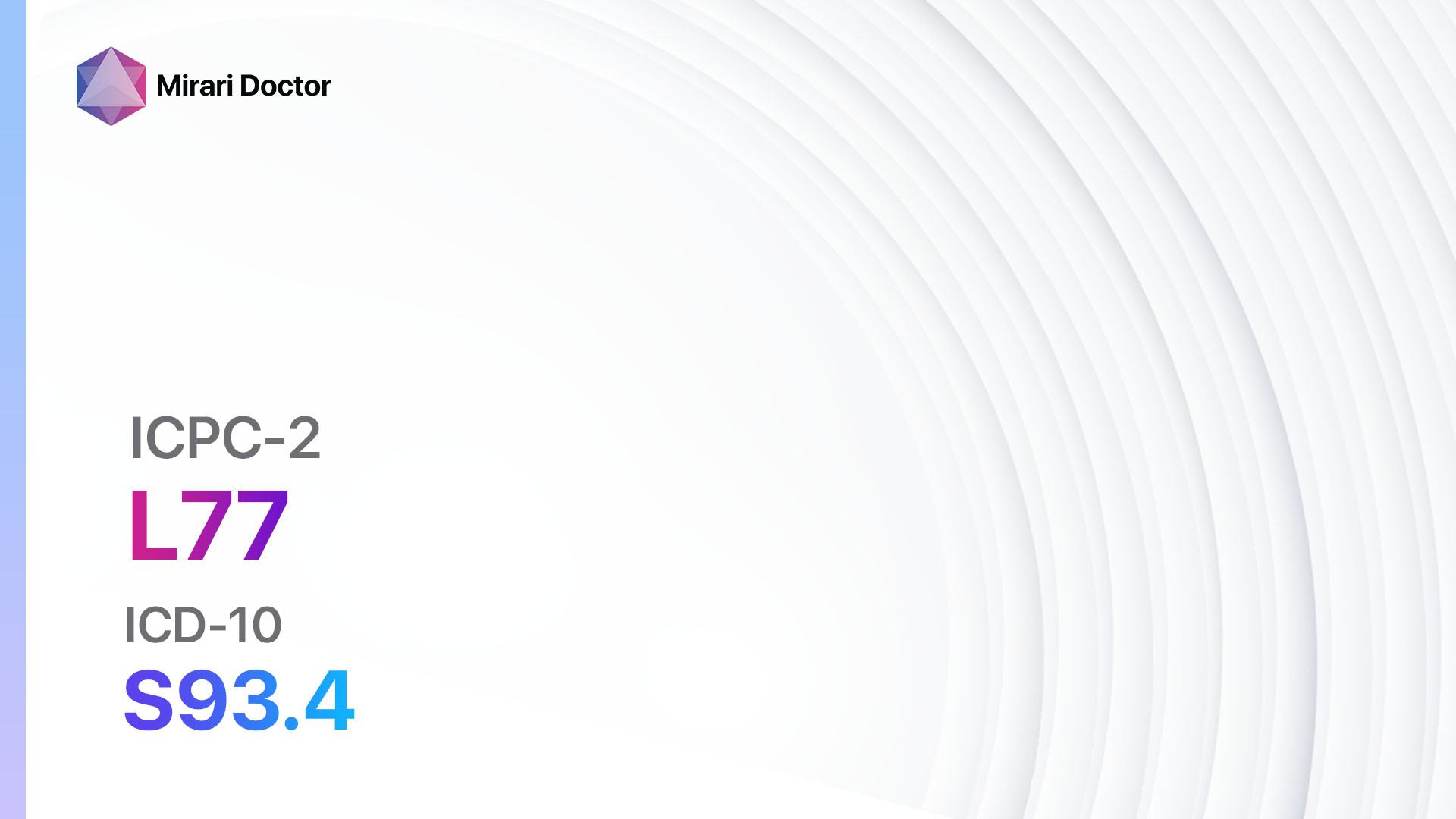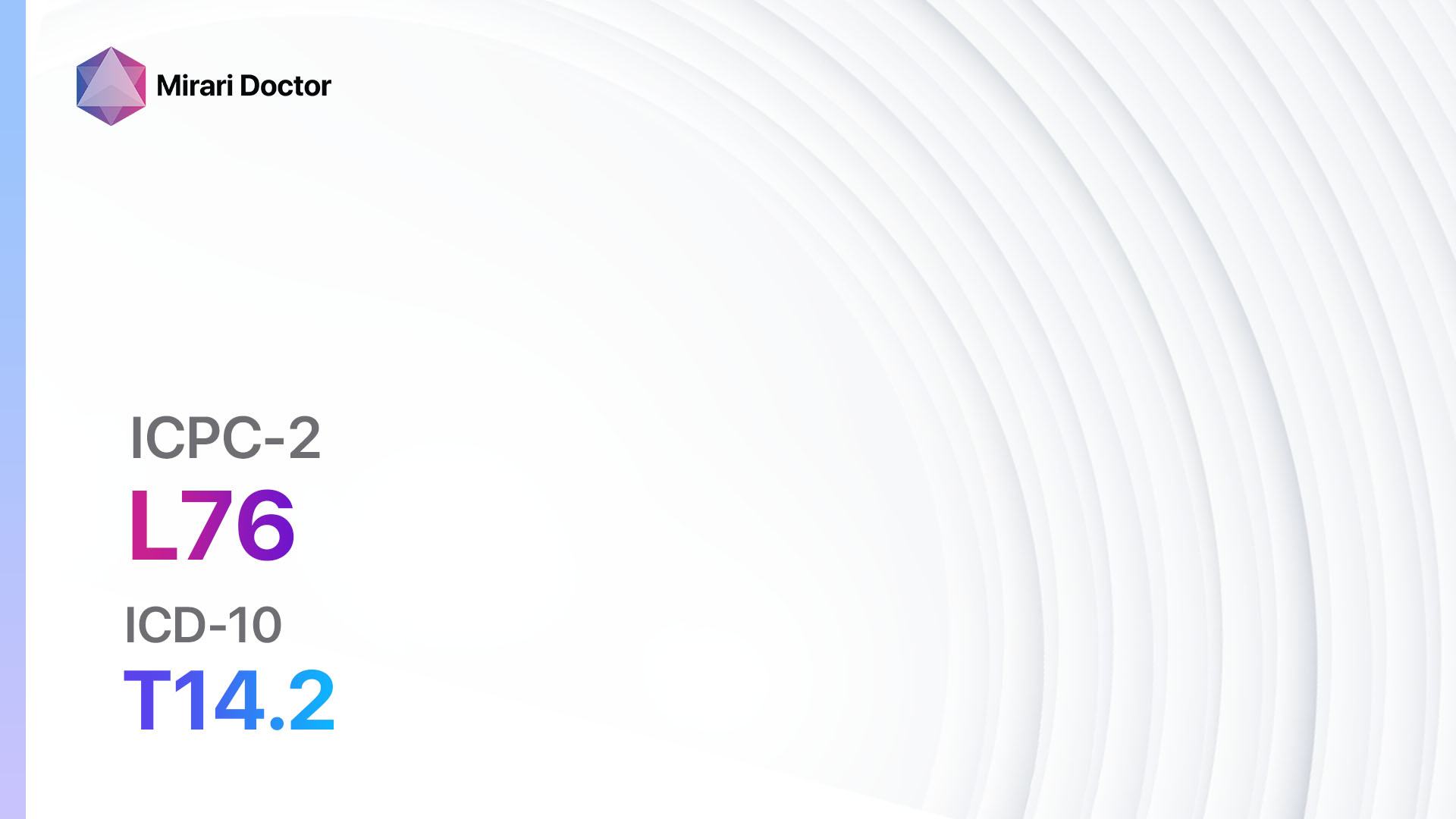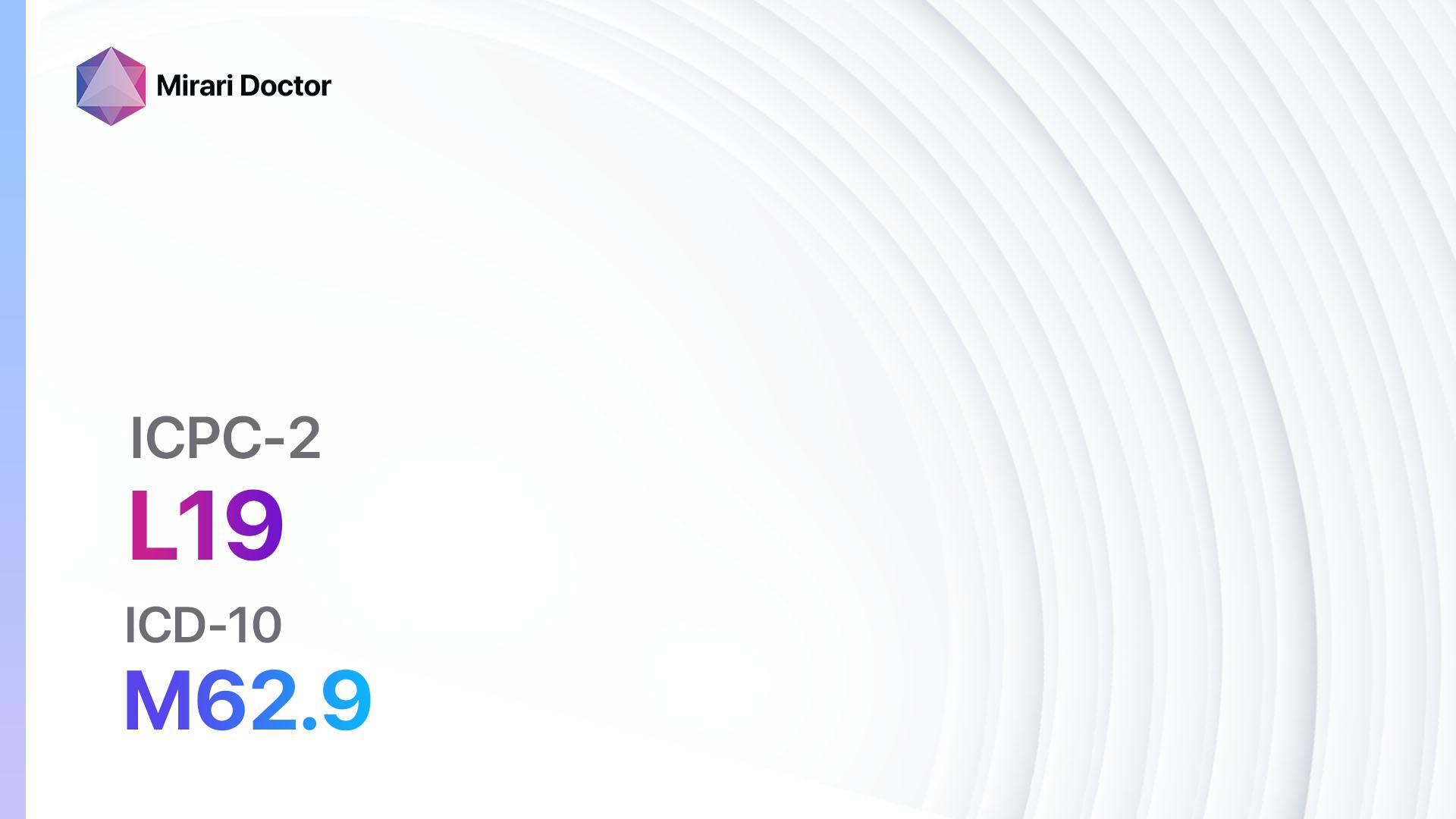
Introduction
Muscle symptom/complaint NOS refers to a non-specific muscle-related issue that does not fit into a specific diagnostic category. It is a common complaint among patients and can be caused by various factors[1][2]. The aim of this guide is to provide healthcare professionals with a comprehensive approach to diagnosing and managing muscle symptoms/complaints NOS.
Codes
- ICPC-2 Code: L19 Muscle symptom/complaint NOS[3]
- ICD-10 Code: M62.9 Disorder of muscle, unspecified[4]
Symptoms
- Muscle pain: Patients may experience localized or generalized muscle pain[5].
- Muscle weakness: Patients may have difficulty performing tasks that require muscle strength[6].
- Muscle cramps: Patients may experience involuntary muscle contractions[7].
- Muscle stiffness: Patients may have difficulty moving their muscles smoothly[8].
- Muscle fatigue: Patients may feel tired or exhausted after minimal physical activity[9].
Causes
- Overuse or strain: Excessive use or strain on the muscles can lead to muscle symptoms/complaints NOS[10].
- Muscle imbalances: Imbalances in muscle strength or flexibility can contribute to muscle symptoms/complaints NOS.
- Poor posture: Incorrect posture can put strain on the muscles and lead to symptoms.
- Stress or anxiety: Emotional stress or anxiety can manifest as muscle symptoms/complaints NOS.
- Nutritional deficiencies: Lack of essential nutrients can affect muscle function and lead to symptoms.
Diagnostic Steps
Medical History
- Gather information about the patient’s symptoms, including the duration, intensity, and any triggering or alleviating factors.
- Inquire about any recent injuries or physical activities that may have contributed to the symptoms.
- Ask about the patient’s occupation and daily activities to identify any potential muscle strain or overuse.
- Assess the patient’s medical history, including any chronic conditions or medications that may be relevant to the symptoms.
- Inquire about the patient’s stress levels and any recent life events that may have contributed to the symptoms.
Physical Examination
- Perform a thorough physical examination, including a general assessment of the patient’s muscle tone, strength, and flexibility.
- Palpate the affected muscles to identify any areas of tenderness or muscle knots.
- Observe the patient’s posture and gait to identify any abnormalities that may be contributing to the symptoms.
- Assess the patient’s range of motion and joint stability to rule out any underlying musculoskeletal issues.
- Perform neurological tests, such as reflex testing and sensory evaluation, to rule out any nerve-related causes of the symptoms.
Laboratory Tests
- Complete blood count (CBC): To rule out any underlying infections or inflammatory conditions.
- Basic metabolic panel (BMP): To assess the patient’s electrolyte levels and kidney function.
- Creatine kinase (CK) levels: To evaluate muscle damage or inflammation.
- Thyroid function tests: To rule out any thyroid-related causes of muscle symptoms.
- Vitamin D levels: To assess for potential nutritional deficiencies that may contribute to muscle symptoms.
Diagnostic Imaging
- X-rays: To evaluate the bones and joints for any abnormalities or signs of injury.
- Ultrasound: To assess the soft tissues, such as muscles and tendons, for any abnormalities or signs of inflammation.
- MRI (Magnetic Resonance Imaging): To obtain detailed images of the muscles, tendons, and surrounding structures to identify any underlying issues.
Other Tests
- Electromyography (EMG): To assess the electrical activity of the muscles and identify any nerve-related causes of the symptoms.
- Nerve conduction studies: To evaluate the speed and strength of the electrical signals in the nerves.
- Trigger point injections: To relieve muscle pain and inflammation by injecting a local anesthetic or corticosteroid into trigger points.
Follow-up and Patient Education
- Schedule a follow-up appointment to review the diagnostic test results and discuss the treatment plan.
- Provide the patient with educational materials or resources about muscle health, proper posture, and exercises to improve muscle strength and flexibility.
- Encourage the patient to maintain a healthy lifestyle, including regular exercise, balanced nutrition, and stress management techniques.
Possible Interventions
Traditional Interventions
Medications:
Top 5 drugs for Muscle symptom/complaint NOS:
- Nonsteroidal anti-inflammatory drugs (NSAIDs) (e.g., Ibuprofen, Naproxen):
- Cost: Generic versions can be $3-$20/month.
- Contraindications: Active peptic ulcer disease, history of gastrointestinal bleeding.
- Side effects: Upset stomach, heartburn, increased risk of bleeding.
- Severe side effects: Severe allergic reactions, kidney damage.
- Drug interactions: Anticoagulants, other NSAIDs.
- Warning: Prolonged use may increase the risk of cardiovascular events.
- Muscle relaxants (e.g., Cyclobenzaprine, Methocarbamol):
- Cost: Generic versions can be $10-$30/month.
- Contraindications: Glaucoma, urinary retention.
- Side effects: Drowsiness, dizziness, dry mouth.
- Severe side effects: Severe allergic reactions, liver toxicity.
- Drug interactions: Sedatives, alcohol.
- Warning: May cause drowsiness, avoid driving or operating machinery.
- Topical analgesics (e.g., Lidocaine patches, Capsaicin cream):
- Cost: Lidocaine patches can be $10-$50/box. Capsaicin cream can be $10-$20/tube.
- Contraindications: Allergy to local anesthetics, broken or irritated skin.
- Side effects: Skin irritation, burning sensation.
- Severe side effects: Allergic reactions, severe skin irritation.
- Drug interactions: None reported.
- Warning: Avoid contact with eyes or mucous membranes.
- Antidepressants (e.g., Amitriptyline, Duloxetine):
- Cost: Generic versions can be $10-$30/month.
- Contraindications: Recent myocardial infarction, narrow-angle glaucoma.
- Side effects: Dry mouth, drowsiness, constipation.
- Severe side effects: Suicidal thoughts, serotonin syndrome.
- Drug interactions: Monoamine oxidase inhibitors (MAOIs), other serotonergic drugs.
- Warning: May take several weeks to achieve therapeutic effect.
- Anticonvulsants (e.g., Gabapentin, Pregabalin):
- Cost: Generic versions can be $10-$30/month.
- Contraindications: Hypersensitivity to the drug.
- Side effects: Dizziness, drowsiness, peripheral edema.
- Severe side effects: Suicidal thoughts, severe allergic reactions.
- Drug interactions: None reported.
- Warning: May cause drowsiness, avoid driving or operating machinery.
Alternative Drugs:
- Acetaminophen: Over-the-counter pain reliever that can be used for mild to moderate muscle pain. Cost: $5-$10/month.
- Capsaicin patches: Topical patches that can provide localized pain relief. Cost: $10-$20/box.
- Benzodiazepines: Muscle relaxants that can be used for short-term relief of muscle spasms. Cost: Generic versions can be $10-$30/month.
- Steroid injections: Injections of corticosteroids into the affected muscles to reduce inflammation and pain. Cost: $50-$200/injection.
- Physical therapy: A non-pharmacological approach that focuses on exercises and techniques to improve muscle strength and flexibility. Cost: $50-$150/session.
Surgical Procedures:
- Surgical intervention is generally not indicated for muscle symptoms/complaints NOS. However, in rare cases where there is an underlying structural issue causing the symptoms, surgical options may be considered. The cost of surgical procedures can vary significantly depending on the specific procedure and location.
Alternative Interventions
- Massage therapy: Manual manipulation of the muscles to relieve tension and improve blood flow. Cost: $50-$100/session.
- Acupuncture: Traditional Chinese medicine technique involving the insertion of thin needles into specific points on the body to promote healing and pain relief. Cost: $60-$120/session.
- Chiropractic care: Manipulation of the spine and joints to improve musculoskeletal alignment and relieve muscle symptoms. Cost: $50-$200/session.
- Physical therapy: A non-pharmacological approach that focuses on exercises and techniques to improve muscle strength and flexibility. Cost: $50-$150/session.
- Yoga: A mind-body practice that combines physical postures, breathing exercises, and meditation to improve muscle strength, flexibility, and relaxation. Cost: Varies depending on the location and type of class.
Lifestyle Interventions
- Regular exercise: Engaging in regular physical activity, such as walking, swimming, or cycling, can help improve muscle strength and flexibility. Cost: Varies depending on the chosen activity (e.g., gym membership, equipment costs).
- Proper posture: Maintaining good posture throughout the day can help prevent muscle strain and alleviate symptoms. Cost: None.
- Stress management techniques: Practicing relaxation techniques, such as deep breathing, meditation, or yoga, can help reduce muscle tension and improve overall well-being. Cost: Varies depending on the chosen technique (e.g., yoga classes, meditation apps).
- Balanced nutrition: Consuming a diet rich in fruits, vegetables, lean proteins, and whole grains can provide the necessary nutrients for muscle health. Cost: Varies depending on individual food choices.
- Adequate rest and sleep: Ensuring sufficient rest and quality sleep can help promote muscle recovery and reduce symptoms. Cost: None.
It is important to note that the cost ranges provided are approximate and may vary depending on the location and availability of the interventions.
Mirari Cold Plasma Alternative Intervention
Understanding Mirari Cold Plasma
- Safe and Non-Invasive Treatment: Mirari Cold Plasma is a safe and non-invasive treatment option for various skin conditions. It does not require incisions, minimizing the risk of scarring, bleeding, or tissue damage.
- Efficient Extraction of Foreign Bodies: Mirari Cold Plasma facilitates the removal of foreign bodies from the skin by degrading and dissociating organic matter, allowing easier access and extraction.
- Pain Reduction and Comfort: Mirari Cold Plasma has a local analgesic effect, providing pain relief during the treatment, making it more comfortable for the patient.
- Reduced Risk of Infection: Mirari Cold Plasma has antimicrobial properties, effectively killing bacteria and reducing the risk of infection.
- Accelerated Healing and Minimal Scarring: Mirari Cold Plasma stimulates wound healing and tissue regeneration, reducing healing time and minimizing the formation of scars.
Mirari Cold Plasma Prescription
Video instructions for using Mirari Cold Plasma Device – L19 Muscle symptom/complaint NOS (ICD-10:M62.9)
| Mild | Moderate | Severe |
| Mode setting: 2 (Wound Healing) Location: 0 (Localized) Morning: 15 minutes, Evening: 15 minutes |
Mode setting: 2 (Wound Healing) Location: 0 (Localized) Morning: 30 minutes, Lunch: 30 minutes, Evening: 30 minutes |
Mode setting: 2 (Wound Healing) Location: 0 (Localized) Morning: 30 minutes, Lunch: 30 minutes, Evening: 30 minutes |
| Mode setting: 9 (Arthritis) Location: 0 (Localized) Morning: 15 minutes, Evening: 15 minutes |
Mode setting: 9 (Arthritis) Location: 0 (Localized) Morning: 30 minutes, Lunch: 30 minutes, Evening: 30 minutes |
Mode setting: 9 (Arthritis) Location: 0 (Localized) Morning: 30 minutes, Lunch: 30 minutes, Evening: 30 minutes |
| Mode setting: 7 (Immunotherapy) Location: 1 (Sacrum) Morning: 15 minutes, Evening: 15 minutes |
Mode setting: 7 (Immunotherapy) Location: 1 (Sacrum) Morning: 30 minutes, Lunch: 30 minutes, Evening: 30 minutes |
Mode setting: 7 (Immunotherapy) Location: 1 (Sacrum) Morning: 30 minutes, Lunch: 30 minutes, Evening: 30 minutes |
| Total Morning: 45 minutes approx. $7.50 USD, Evening: 45 minutes approx. $7.50 USD |
Total Morning: 90 minutes approx. $15 USD, Lunch: 90 minutes approx. $15 USD, Evening: 90 minutes approx. $15 USD, |
Total Morning: 90 minutes approx. $15 USD, Lunch: 90 minutes approx. $15 USD, Evening: 90 minutes approx. $15 USD, |
| Usual treatment for 7-60 days approx. $105 USD – $900 USD | Usual treatment for 6-8 weeks approx. $1,890 USD – $2,520 USD |
Usual treatment for 3-6 months approx. $4,050 USD – $8,100 USD
|
 |
|
Use the Mirari Cold Plasma device to treat Muscle symptom/complaint NOS effectively.
WARNING: MIRARI COLD PLASMA IS DESIGNED FOR THE HUMAN BODY WITHOUT ANY ARTIFICIAL OR THIRD PARTY PRODUCTS. USE OF OTHER PRODUCTS IN COMBINATION WITH MIRARI COLD PLASMA MAY CAUSE UNPREDICTABLE EFFECTS, HARM OR INJURY. PLEASE CONSULT A MEDICAL PROFESSIONAL BEFORE COMBINING ANY OTHER PRODUCTS WITH USE OF MIRARI.
Step 1: Cleanse the Skin
- Start by cleaning the affected area of the skin with a gentle cleanser or mild soap and water. Gently pat the area dry with a clean towel.
Step 2: Prepare the Mirari Cold Plasma device
- Ensure that the Mirari Cold Plasma device is fully charged or has fresh batteries as per the manufacturer’s instructions. Make sure the device is clean and in good working condition.
- Switch on the Mirari device using the power button or by following the specific instructions provided with the device.
- Some Mirari devices may have adjustable settings for intensity or treatment duration. Follow the manufacturer’s instructions to select the appropriate settings based on your needs and the recommended guidelines.
Step 3: Apply the Device
- Place the Mirari device in direct contact with the affected area of the skin. Gently glide or hold the device over the skin surface, ensuring even coverage of the area experiencing.
- Slowly move the Mirari device in a circular motion or follow a specific pattern as indicated in the user manual. This helps ensure thorough treatment coverage.
Step 4: Monitor and Assess:
- Keep track of your progress and evaluate the effectiveness of the Mirari device in managing your Muscle symptom/complaint NOS. If you have any concerns or notice any adverse reactions, consult with your health care professional.
Note
This guide is for informational purposes only and should not replace the advice of a medical professional. Always consult with your healthcare provider or a qualified medical professional for personal advice, diagnosis, or treatment. Do not solely rely on the information presented here for decisions about your health. Use of this information is at your own risk. The authors of this guide, nor any associated entities or platforms, are not responsible for any potential adverse effects or outcomes based on the content.
Mirari Cold Plasma System Disclaimer
- Purpose: The Mirari Cold Plasma System is a Class 2 medical device designed for use by trained healthcare professionals. It is registered for use in Thailand and Vietnam. It is not intended for use outside of these locations.
- Informational Use: The content and information provided with the device are for educational and informational purposes only. They are not a substitute for professional medical advice or care.
- Variable Outcomes: While the device is approved for specific uses, individual outcomes can differ. We do not assert or guarantee specific medical outcomes.
- Consultation: Prior to utilizing the device or making decisions based on its content, it is essential to consult with a Certified Mirari Tele-Therapist and your medical healthcare provider regarding specific protocols.
- Liability: By using this device, users are acknowledging and accepting all potential risks. Neither the manufacturer nor the distributor will be held accountable for any adverse reactions, injuries, or damages stemming from its use.
- Geographical Availability: This device has received approval for designated purposes by the Thai and Vietnam FDA. As of now, outside of Thailand and Vietnam, the Mirari Cold Plasma System is not available for purchase or use.
References
- Pellekooren, D. P., Spreeuwenberg, P., Willemsen, R. T., Braspenning, J. C., & Schellevis, F. G. (2023). Health complaints in individuals visiting primary health care: A cross-sectional study using routine electronic health records. PLOS ONE, 18(4), e0282077. https://doi.org/10.1371/journal.pone.0282077
- Verbeke, M., Schrans, D., Deroose, S., & De Maeseneer, J. (2006). The International Classification of Primary Care (ICPC-2): an essential tool in the EPR of the GP. Studies in Health Technology and Informatics, 124, 809–814.
- WONCA International Classification Committee. (2005). ICPC-2-R: International Classification of Primary Care (2nd ed., revised). Oxford University Press.
- World Health Organization. (2019). International Statistical Classification of Diseases and Related Health Problems (11th ed.). https://icd.who.int/browse11/l-m/en
- Stults, B. M. (1984). Preventive health care for the elderly. Western Journal of Medicine, 141(6), 832–845.
- Larsson, L., Degens, H., Li, M., Salviati, L., Lee, Y. il, Thompson, W., Kirkland, J. L., & Sandri, M. (2019). Sarcopenia: Aging-Related Loss of Muscle Mass and Function. Physiological Reviews, 99(1), 427–511. https://doi.org/10.1152/physrev.00061.2017
- Miller, T. M. (2008). Differential diagnosis of myotonia and periodic paralysis. Neurotherapeutics, 5(2), 182–187. https://doi.org/10.1016/j.nurt.2008.01.002
- Ferreira-Valente, M. A., Pais-Ribeiro, J. L., & Jensen, M. P. (2011). Validity of four pain intensity rating scales. Pain, 152(10), 2399–2404. https://doi.org/10.1016/j.pain.2011.07.005
- Wan, J. J., Qin, Z., Wang, P. Y., Sun, Y., & Liu, X. (2017). Muscle fatigue: general understanding and treatment. Experimental & Molecular Medicine, 49(10), e384. https://doi.org/10.1038/emm.2017.194
- Järvinen, T. A. H., Järvinen, T. L. N., Kääriäinen, M., Kalimo, H., & Järvinen, M. (2005). Muscle injuries: biology and treatment. The American Journal of Sports Medicine, 33(5), 745–764. https://doi.org/10.1177/0363546505274714
.
Related articles
Made in USA



